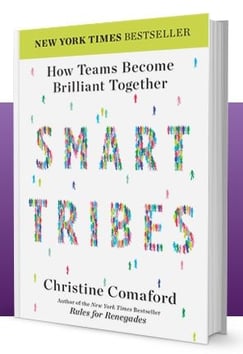
Patience has never been my virtue. I tap my feet waiting in line, traffic is a nightmare and “take the long way home” never made sense to me.
In business, I never thought this was an issue. Getting the task done as quickly as possible was always something I was praised for, when I was someone else’s employee.
Now that I’m managing people, this lack of patience may be my downfall.
Without even realizing it, most leaders do and say things that create ineffective employees. Christine Comaford, author of SmartTribes: How Teams Become Brilliant Together says even good leaders unconsciously strike fear in the hearts of their work force.
“From time to time, we all say or do things that spark unconscious fears in our employees,” says Comaford. “The primitive ‘fight, flight or freeze’ part of the brain takes control. When that happens, when people are stuck in what I call the Critter State, all they can focus on is their own survival.”
Just like the garden, no one wants critters. But, I get the feeling my lack of patience is creating this mental state.
Continue to reading to learn how to practice patience and put people first.
What makes a good employee? Innovation, collaboration, creativity and loyalty come to mind first.
Yet, when threatened, decision-making becomes: what will keep me safe?
The first mistake leaders make, says Comaford, is imagining employees as antelopes. Because of your authority over them, they view you as a lion. Unless you can get them to see you as another antelope, you won’t be able to influence them; they’ll be too busy ensuring their own survival to accept your feedback.
This analogy shifts the business model that I always knew on its head. Be a lion. Be aggressive. Especially as a woman in business, show you are fearless.
This is not a good leadership style when dealing with anyone, especially millennials. As such, leaders must become responsible for their actions and accountable for the effect their behavior has on their employees, and the organization as a whole.
The second mistake leaders make is solving problems for their employees instead of promoting emotional engagement and intelligent decision-making.
Comaford proposes three “shortcut” phrases to help employees solve problems on their own and make them feel safe:
- “What if…”: use with an idea/suggestion. Be curious and not force a position.
- “I need your help.”: this is a dom-sub swap, because when the dominant person uses it, they are asking the subordinate to rise up and swap roles. This is an especially effective phrase when you want a person to change their behavior or take on more responsibility.
- “Would it be helpful if…”: When someone is unable to move forward, offer a solution that will help them see a possible course of action or positive outcome.
The third mistake leaders make is not allowing employees to develop a sense of ownership in the company. This will serve them – and the company – well.
- Allow for mistakes. Everyone makes mistakes, as long as it does not impact business, let it go.
- Clarify where things are headed and be transparent.
- Allow employees to share their opinions, ideas and especially solutions towards issues hampering productivity and affecting work life.
- Illustrate benefits beyond money. Work isn't about money alone. What else do you provide?
- Show respect. Equality and fairness in a diverse workplace culture will lead to higher engagement, productivity and sense of ownership at work.

The fourth mistake, according to Comaford, are allowing people to fall into default roles. There are three she says lean toward: victim, rescuer or persecutor.
“Together these roles make up the Tension Triangle and when we’re in it, we’re problem-focused,” explains Comaford. “We see everything as a problem, which causes anxiety, which leads to a reaction, which leads to another problem. It’s a self-perpetuating cycle. The solution is to switch your focus from problems to outcomes. Instead of asking ‘What’s wrong?’ and ‘Why is this happening?’ we ask ‘What do we want?’ and ‘How will we create it?’”
And that becomes the final mistake, to focus on problem. Rather, focus on outcomes instead of problems. It’s empowering and energizing and fills you with confidence.















